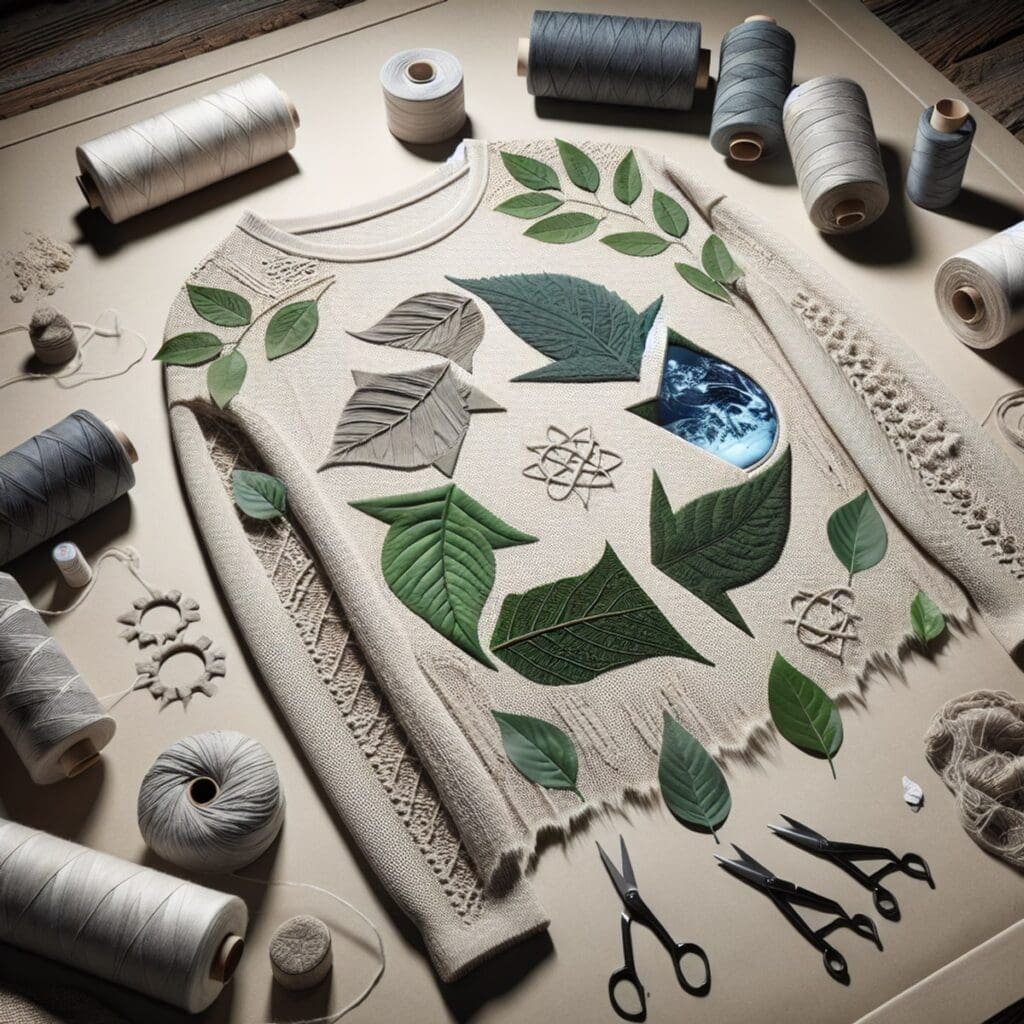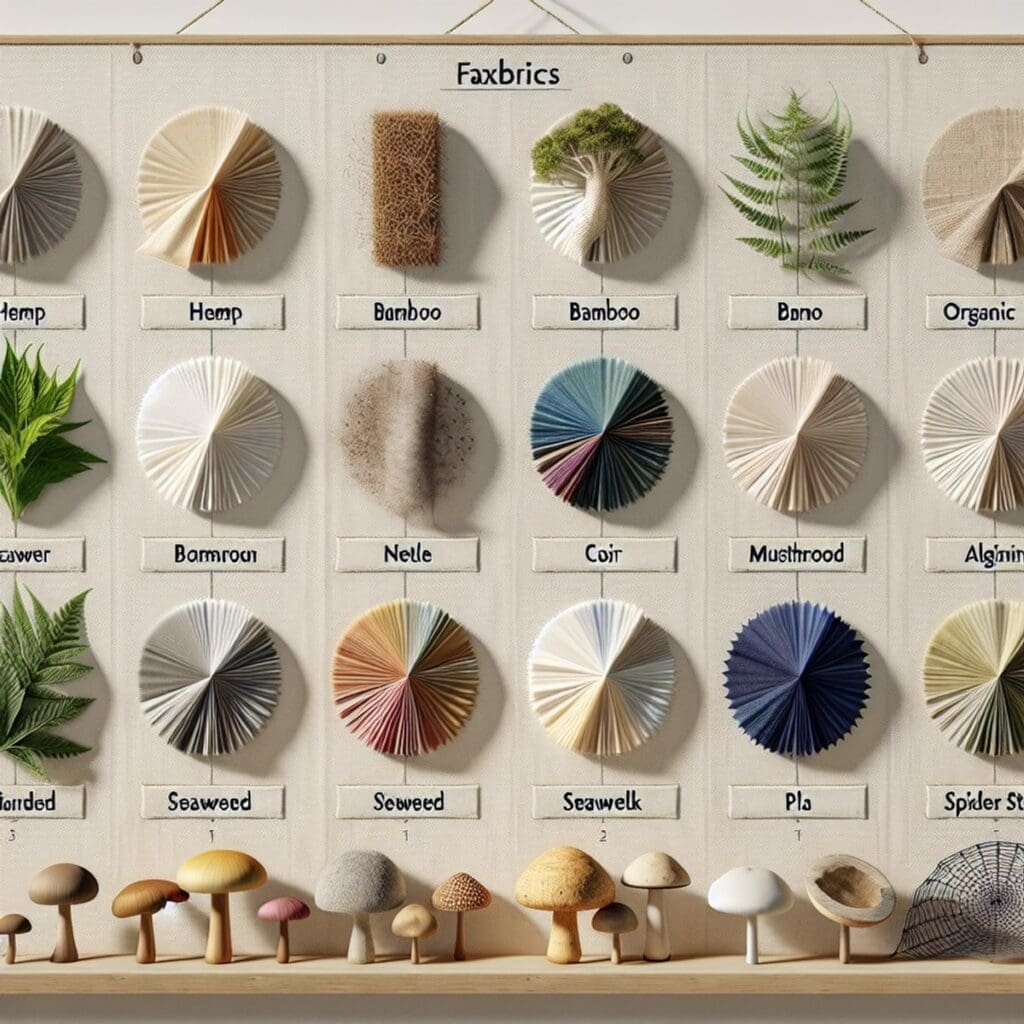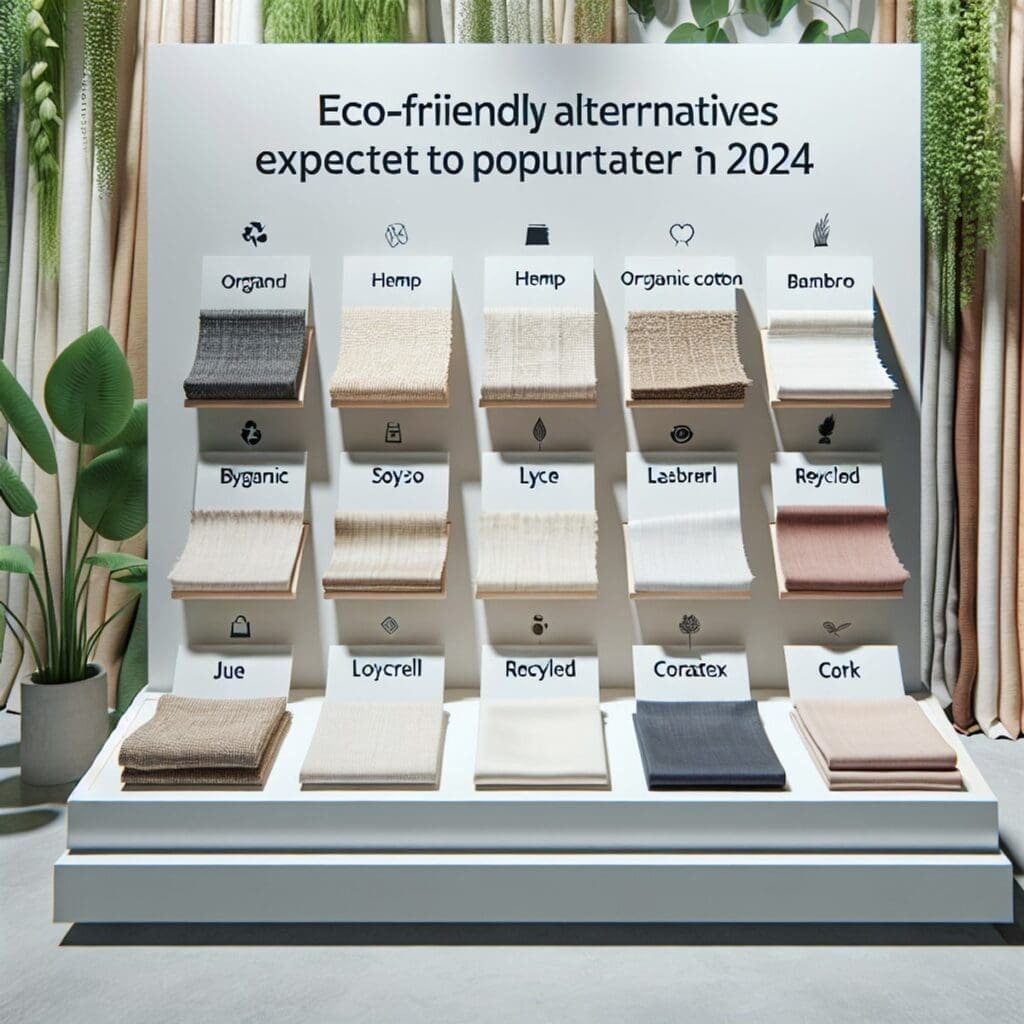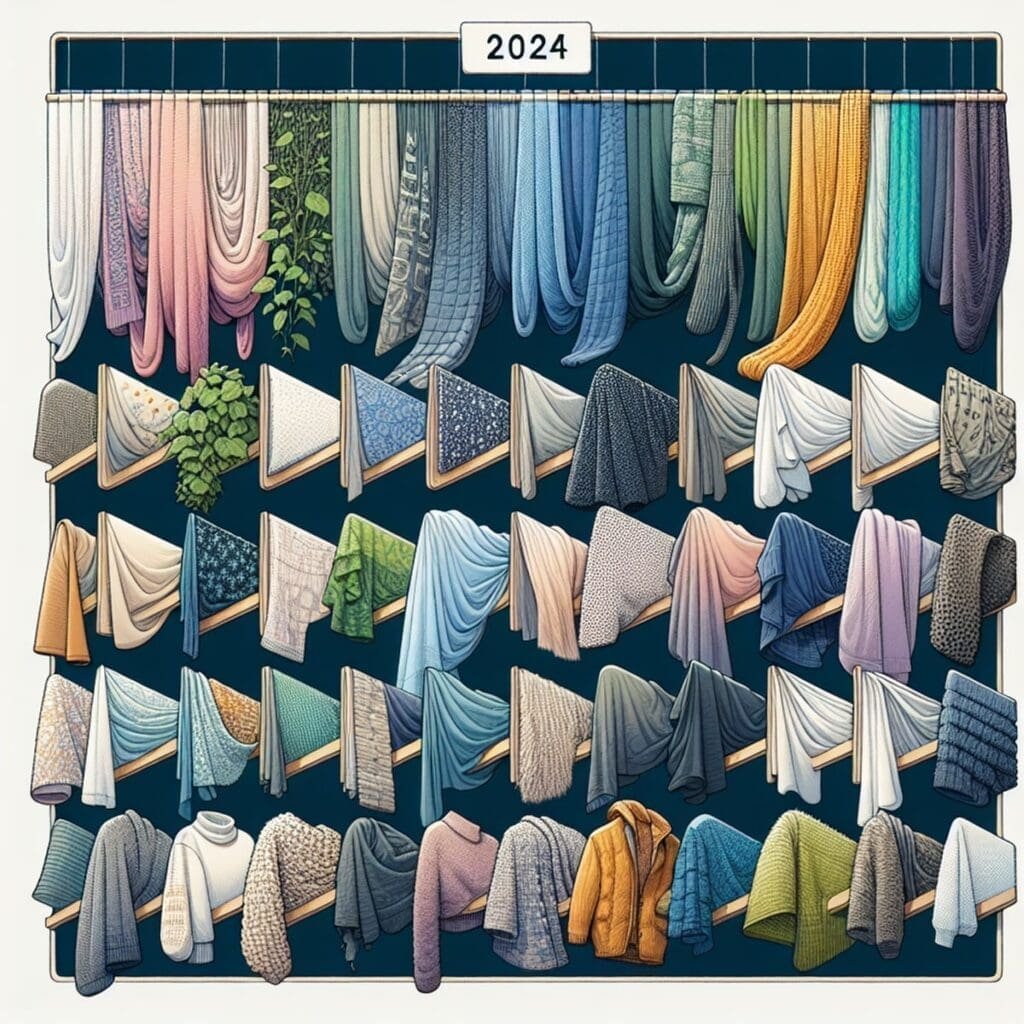
Introduction to Eco-Friendly Alternatives Fabrics
The fashion industry is shifting towards sustainability as consumers increasingly demand eco-friendly options. This growing awareness of the impact of fashion on the environment has led to a surge in the popularity of sustainable fabrics. These fabrics offer a more environmentally conscious choice compared to conventional materials, which often contribute to pollution and resource depletion. Eco-Friendly Alternatives Fabrics best
Conventional fabric production methods involve using harmful chemicals and large amounts of water, which leads to water and soil pollution. It also contributes to deforestation and habitat destruction through the extraction of raw materials. This calls for more sustainable options in the fashion industry.
Clothing labels play a crucial role in promoting transparency and helping consumers make informed choices about sustainable fabrics. They provide valuable information about the materials used in garments, allowing consumers to identify eco-friendly alternatives. By supporting brands that prioritize sustainability, consumers can contribute to positive change in the fashion industry.
In this article, we will explore ten eco-friendly fabric alternatives that you should try in 2024. These fabrics offer various benefits, from reducing waste to conserving resources. By choosing these sustainable options, you can make a positive impact on the environment while still enjoying stylish and high-quality clothing.
1. Recycled Cotton

Recycled cotton is sourced from pre-consumer or post-consumer textile waste materials, offering a sustainable solution to reduce the environmental impact of fashion production.
Here are some key points about recycled cotton:
- It helps in reducing waste generated by the fashion industry.
- It conserves resources like water and energy.
- It promotes a more circular and eco-friendly approach to textile manufacturing.
Innovative circular manufacturing processes play a key role in scaling up the production of recycled cotton fabrics, further promoting sustainability within the fashion industry.
2. Organic Cotton

Organic cotton offers a sustainable alternative to conventional cotton, as it is cultivated without the use of harmful pesticides or synthetic fertilizers. By supporting organic farming practices, such as those that prioritize soil health and water quality, you contribute to maintaining the integrity of these vital resources, promoting environmental sustainability in the process. When purchasing cotton garments, it’s essential to look for certified organic labels to ensure that the products align with these eco-friendly standards.
3. Hemp
Keywords: hemp, sustainable clothing fabric, lower-impact fabrics
Talking points:
- Explore the various sustainable attributes of hemp, such as its natural durability and minimal need for irrigation or agrochemicals.
Hemp is an exceptional choice for sustainable clothing fabric because of its incredible environmental benefits. It is naturally durable and requires less irrigation and agrochemicals compared to other crops, making it a better option for eco-friendly fashion.”
4. Linen

Linen is a plant-based fiber that has been used in the fashion industry for centuries. Made from the flax plant, linen is considered an environmentally friendly fabric due to its renewable and biodegradable nature. Here are some key points about linen:
- Renewable: Flax plants used to make linen can be grown in a relatively short period of time, making it a renewable resource. It requires less water and fewer pesticides compared to other crops like cotton.
- Biodegradable: Linen is completely biodegradable, meaning it will break down naturally over time without leaving harmful residues behind.
- Durability: Linen is known for its strength and durability, making it a long-lasting fabric option for clothing.
- Breathability: The natural fibers of linen allow air to flow through, making it a highly breathable fabric that keeps you cool in warm weather.
- Versatility: Linen can be used for various clothing items, from shirts and dresses to trousers and suits. Its versatility makes it suitable for both casual and formal wear.
Linen’s sustainable attributes, combined with its timeless appeal and versatility, make it an excellent choice for those seeking eco-friendly alternatives in the fashion industry.
5. TENCEL Lyocell

TENCEL Lyocell is a sustainable fabric made from wood pulp. It is known for its closed-loop production process and soft, drapey qualities.
Features of TENCEL Lyocell:
- Eco-Friendly: TENCEL Lyocell is a type of man-made cellulosic fiber that offers an eco-friendly alternative to traditional fabrics.
- Sustainable Sourcing: It is made from sustainably sourced wood pulp, usually from eucalyptus trees, which are grown on renewable plantations.
- Efficient Production: The production process of TENCEL Lyocell is highly efficient and environmentally friendly. It uses a closed-loop system, where the solvent used to break down the wood pulp is continuously recycled, resulting in minimal waste and water usage.
- Safe for All: This closed-loop production process also ensures that the chemicals used are non-toxic and safe for both workers and the environment.
- Exceptional Performance: In terms of performance, TENCEL Lyocell stands out with its exceptional breathability, moisture-wicking properties, and silky smooth texture. It drapes beautifully and has a luxurious feel, making it a popular choice for clothing items such as dresses, blouses, and bedding.
- Antibacterial Properties: Moreover, TENCEL Lyocell has natural antibacterial properties, making it resistant to odors and ideal for activewear or garments that require frequent washing.
TENCEL Lyocell is becoming increasingly popular in the fashion industry because of its sustainable attributes and versatile performance. Its softness, breathability, and eco-friendly production process make it a great choice for conscious consumers looking for high-quality fabrics that minimize their impact on the environment.
6. Recycled Wool

Recycled wool is a sustainable alternative that aims to reduce the environmental impact associated with traditional wool production. By repurposing discarded woolen garments or textile waste, recycled wool offers a solution to the growing problem of textile waste in the fashion industry.
Key Benefits of Recycled Wool:
1. Environmental Impact
- Traditional wool production involves raising sheep and using large amounts of water, land, and energy.
- It also contributes to greenhouse gas emissions and water pollution.
- Recycled wool helps minimize these impacts by reusing existing materials instead of producing new ones.
2. Waste Reduction
- By transforming old wool garments or textile waste into new fabrics, recycled wool reduces the amount of textile waste that ends up in landfills.
- This promotes a circular economy and conserves resources.
3. Desirable Properties
- Despite being recycled, wool retains its natural properties such as insulation and warmth.
- It is still an excellent choice for winter wear, ensuring comfort and functionality.
4. Durability
- Wool is known for its durability, and recycled wool is no exception.
- The fibers are resilient and long-lasting, making it a sustainable choice for creating high-quality garments.
Recycled wool offers a way to enjoy the benefits of wool without contributing to its negative environmental impacts. By choosing products made from recycled wool, you can support the transition towards a more sustainable and circular fashion industry.
7. ECONYL (Recycled Nylon)
ECONYL is an innovative fabric that showcases the possibilities of recycling materials to create sustainable fashion items. It is a regenerated nylon yarn made from discarded fishing nets and post-consumer nylon waste. Here are some key points about ECONYL:
- Environmental Impact: ECONYL helps address the issue of ocean pollution by repurposing discarded fishing nets, which are a major source of marine debris. By using these nets as raw materials, ECONYL reduces the amount of waste in our oceans and landfills.
- Durability: Despite being made from recycled materials, ECONYL retains its durability and strength. This makes it an excellent choice for creating long-lasting fashion pieces that can withstand everyday wear and tear.
- Versatility: ECONYL can be used to produce a wide range of fashion items, including swimwear, activewear, and accessories. Its versatility allows designers to incorporate sustainable fabrics into various styles and designs.
By choosing ECONYL, you can contribute to reducing waste and promoting a more sustainable fashion industry. Its innovative features make it a great option for eco-conscious consumers looking for durable and stylish clothing alternatives.
8. Bananatex: A Sustainable Fabric Choice
Bananatex is an innovative fabric that offers a sustainable alternative in the fashion industry. This eco-friendly material is produced from banana plant stems, which are harvested as a byproduct of agricultural operations.
Here are some key points about Bananatex:
- Sustainable sourcing: The use of banana plant stems as raw materials for Bananatex reduces waste and utilizes a resource that would otherwise go unused.
- Unique characteristics: Bananatex has a distinct texture and appearance, with a natural irregularity that adds to its charm. It also offers excellent durability, making it suitable for various applications.
- Versatility in design: Bananatex can be woven into different patterns and textures, allowing designers to create innovative and unique garments. Its versatile nature opens up possibilities for creativity and experimentation in fashion.
By exploring fabrics like Bananatex, we can contribute to a more sustainable future for the fashion industry. Keep an eye out for brands incorporating this eco-friendly material into their collections, and consider choosing garments made from Bananatex to support sustainable fashion choices.
9. CIRCULOSE
Keywords: CIRCULOSE, recycled or upcycled cotton
Talking points:
- CIRCULOSE is a groundbreaking material that is made by using innovative recycling methods on cotton fabrics like old clothes or leftover pieces from manufacturing.
10. Piñatex
Piñatex is an innovative fabric that serves as a sustainable alternative to leather. It is made from pineapple leaf fibers, providing a cruelty-free and biodegradable option for the fashion industry.
Choosing a Sustainable Future for Fashion
When it comes to creating a sustainable future for fashion, choosing eco-friendly alternative fabrics is a crucial step. By opting for these materials, you can significantly reduce your environmental impact and support the growth of a more sustainable fashion industry. Here are some key points to consider:
- Explore and Support Eco-Friendly Alternatives: Encourage readers to delve into the world of sustainable fabrics and discover the wide range of options available. By exploring alternative materials, such as recycled cotton, hemp, or TENCEL Lyocell, you can find fabrics that align with your values and contribute to a greener fashion industry.
- Consider Additional Factors: While eco-friendly fabrics offer numerous benefits, it’s important to consider other factors when making sustainable fashion choices. Take into account the durability of the garment, ensuring that it will last longer and reduce the need for frequent replacements. Additionally, consider end-of-life disposal options, such as recycling or composting, to minimize waste.
- Evaluate Overall Garment Production Practices: In addition to choosing sustainable materials, it’s crucial to look at the entire lifecycle of a garment. Consider supporting brands that prioritize ethical manufacturing practices and transparency in their supply chains. Look for certifications like Fair Trade or GOTS (Global Organic Textile Standard) to ensure that your clothing is produced under environmentally and socially responsible conditions.
- Create Lasting Change: By making conscious choices in your clothing purchases, you can be part of a movement towards a more sustainable fashion industry. Share your knowledge and encourage others to join you on this journey towards eco-friendly alternatives. Together, we can drive change and create a brighter future for fashion.
Remember, sustainability goes beyond just the fabric itself. It encompasses a holistic approach that considers the entire lifecycle of a garment. By choosing eco-friendly materials and supporting responsible production practices, you can contribute to a more sustainable future for fashion.
How to Include Sustainable Fabrics in Your Wardrobe
When it comes to incorporating eco-friendly fabrics into your wardrobe, there are several sustainable fashion tips that can help you make conscious choices and embrace a more environmentally friendly approach to your clothing. Here are some practical tips on how to integrate eco-friendly fabrics into your wardrobe:
1. Conscious Shopping
Look for clothing made from recycled cotton, organic cotton, hemp, linen, TENCEL Lyocell, recycled wool, ECONYL, Bananatex, CIRCULOSE, or Piñatex. Prioritize garments that are produced using sustainable materials and processes.
2. Wardrobe Styling
Mix and match eco-friendly pieces with your existing wardrobe to create stylish outfits. Experiment with layering and accessorizing to maximize the versatility of sustainable garments.
3. Clothing Care Practices
Extend the lifespan of your eco-friendly clothing by following proper care instructions. This includes using environmentally friendly detergents, air-drying your clothes when possible, and repairing any damages to prolong their use.
By adopting these sustainable fashion tips, you can gradually shift towards a more eco-conscious wardrobe while contributing to the promotion of environmentally friendly practices in the fashion industry.
The Future of Sustainable Fabrics: Innovations and Challenges
Emerging Trends and Technologies
Advanced Recycling Methods
Innovations in textile recycling technologies are paving the way for the development of more sustainable fabric alternatives. Advanced recycling techniques applied to various materials, such as cotton textiles, production scraps, and worn-out clothes, are enabling the creation of novel eco-friendly fabrics like CIRCULOSE. These methods are contributing to a circular economy approach in the fashion industry.
Bio-Based Materials
The future of sustainable fabrics also encompasses the exploration of bio-based materials derived from agricultural byproducts or natural sources. Innovations such as Bananatex, made from banana plant stems, and Piñatex, crafted from pineapple leaf fibers, showcase the potential of leveraging organic waste to create renewable and biodegradable textile options.
Industry Challenges
Scalability
One of the primary challenges facing sustainable fabric innovations is achieving scalability while maintaining environmental integrity. As demand for eco-friendly materials continues to rise, ensuring that these alternatives can be produced on a larger scale without compromising their sustainability attributes is crucial.
Accessibility
While advancements in sustainable fabric development are promising, ensuring accessibility for designers, manufacturers, and consumers remains a challenge. Making these innovative materials readily available and cost-effective for widespread adoption within the fashion industry requires continued efforts and investment.
By exploring emerging trends and acknowledging existing challenges in sustainable fabric development, the fashion industry can foster ongoing progress towards a more environmentally conscious and ethically responsible future.
Conclusion
The future of fashion lies in the hands of both consumers and brands. By choosing eco-friendly alternative fabrics, you are not only making a personal statement but also contributing to a larger movement towards sustainability in the fashion industry. Your purchasing decisions have the power to influence the practices of clothing labels and designers. As you continue to educate yourself about sustainable materials and seek out environmentally conscious options, you are advocating for a more sustainable future. Together, we can drive the demand for eco-friendly fabrics and push for greater transparency in garment production. Let’s keep the conversation going and work towards a fashion industry that prioritizes both style and sustainability.
Your choices matter. Embrace the power you hold as a consumer and let your voice be heard. The journey towards a more sustainable fashion industry starts with each individual decision. Keep exploring, learning, and supporting eco-friendly alternatives – together, we can make a difference.
Remember, the change begins with you.
FAQs (Frequently Asked Questions)
What are some examples of sustainable fabrics in fashion?
Sustainable fabrics in fashion include recycled cotton, organic cotton, hemp, linen, TENCEL Lyocell, recycled wool, ECONYL (Recycled Nylon), Bananatex, CIRCULOSE, and Piñatex.
How is recycled cotton sourced and what are its benefits?
Recycled cotton is sourced from pre-consumer or post-consumer textile waste materials. Its benefits include waste reduction and conservation of resources, as well as the facilitation of innovative circular manufacturing processes.
What is organic cotton and why is it considered a sustainable alternative?
Organic cotton is grown without the use of harmful pesticides and fertilizers. It supports organic farming practices, which contribute to the integrity of soil health and water quality. When purchasing cotton garments, it’s important to look for certified organic labels.
What are the sustainable attributes of hemp as a clothing fabric?
Hemp is known for its natural durability and minimal need for irrigation or agrochemicals, making it a lower-impact fabric option for sustainable clothing.
How is linen considered an environmentally friendly fabric?
Linen is made from the flax plant and is considered a renewable and biodegradable textile option with a long history of use in fashion.
What are some key features of TENCEL Lyocell as an eco-friendly fabric?
TENCEL Lyocell is derived from wood pulp and known for its closed-loop production process and soft, drapey qualities, making it an innovative and sustainable fabric choice.
How does ECONYL contribute to sustainable fashion through recycled materials?
ECONYL is a regenerated nylon yarn made from discarded fishing nets and post-consumer nylon waste. It offers applications in creating durable yet sustainable fashion items.
What makes Bananatex an eco-friendly fabric option?
Bananatex is produced from banana plant stems harvested as a byproduct of agricultural operations. It offers unique characteristics and versatility in design as an innovative fabric choice.
What is CIRCULOSE and how does it relate to recycled or upcycled cotton?
CIRCULOSE is a breakthrough material created through advanced recycling techniques applied to cotton textiles such as worn-out clothes or production scraps.
What makes Piñatex a sustainable alternative to leather?
Piñatex is made from pineapple leaf fibers, offering a cruelty-free and biodegradable option for the fashion industry as an innovative fabric choice.
How can consumers incorporate eco-friendly fabrics into their wardrobes?
Consumers can incorporate eco-friendly fabrics into their wardrobes through conscious shopping practices, thoughtful wardrobe styling decisions, and proper clothing care methods.
What are some future trends in sustainable fabrics?
Emerging trends in the development of even more sustainable textile materials include advancements in technology that address scalability and accessibility challenges within the industry.
How can consumers contribute to driving the demand for eco-friendly fabrics?
Consumers can be vocal advocates for a more sustainable fashion industry by educating themselves about the materials they wear and making informed purchasing decisions that support eco-friendly alternatives.






